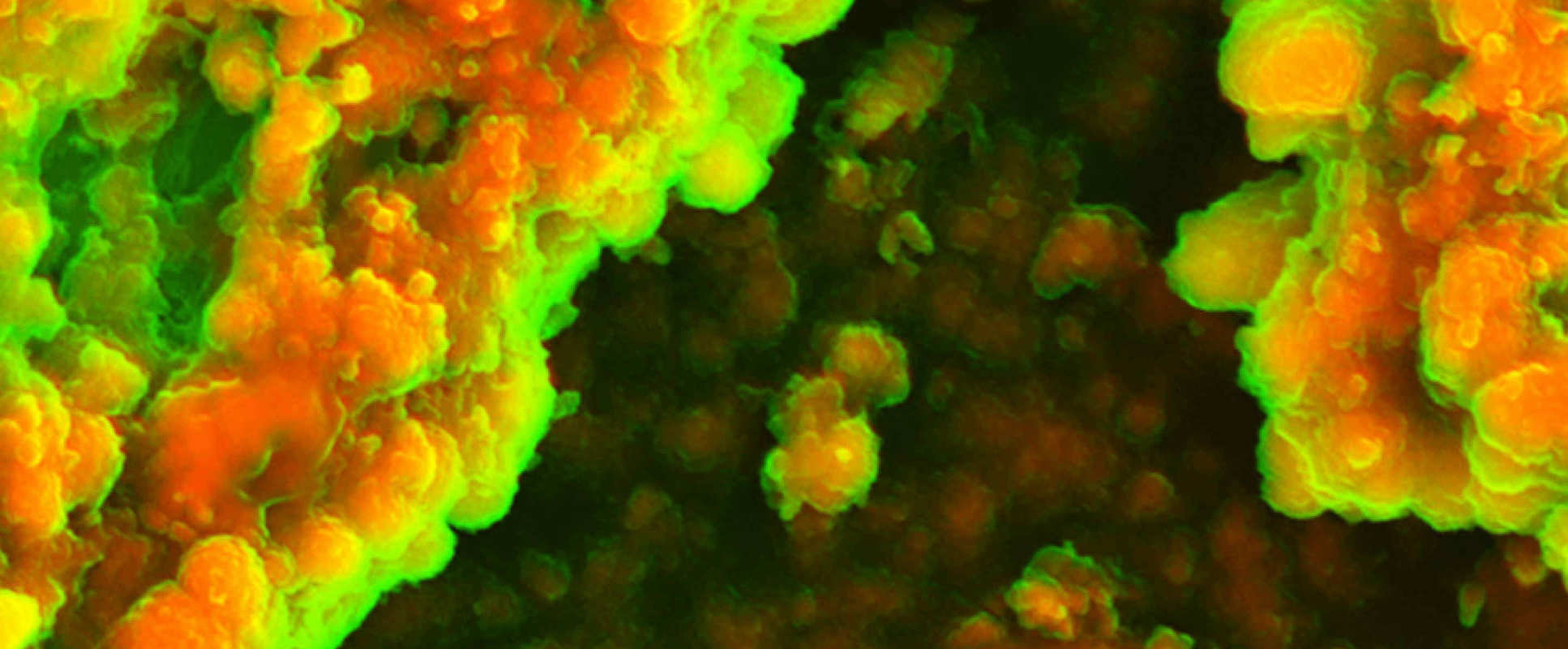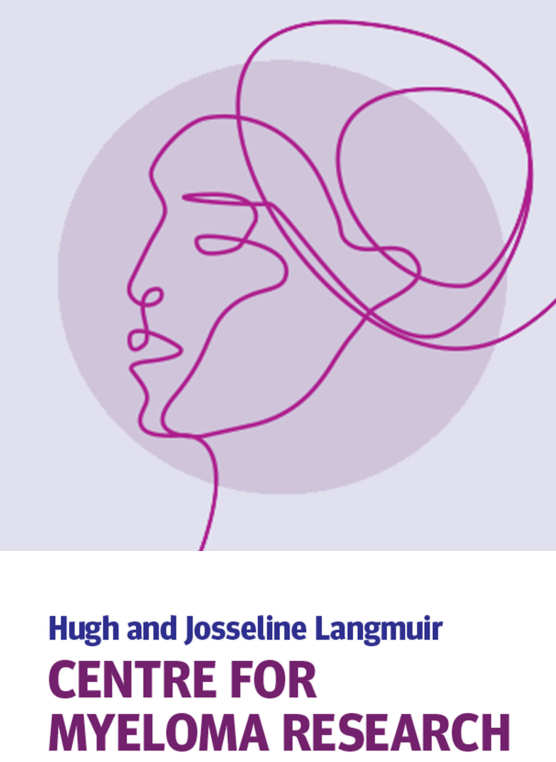
Contact
- CRUK Advanced Clinician Scientist
- Clinical Reader in Molecular Haemato-Oncology
+44 (0)20 3313 4017
holger.auner04@imperial.ac.uk
Areas of research
Proteotoxic stress and metabolism
Myeloma cells are characterised by a unique sensitivity to inhibitors of the proteasome, which is responsible for the controlled degradation of most cellular proteins that have become damaged or are otherwise unwanted. Nevertheless, resistance to proteasome inhibitors occurs in essentially all patients to varying degrees. Accumulation of misfolded proteins in the endoplasmic reticulum (ER), which triggers proteotoxic ‘ER stress’, is widely believed to be the main mechanism of action of proteasome inhibitors. However, data from our lab and other research groups suggest complex interactions between proteasomal protein degradation and multiple metabolic processes. Our aim is to find metabolic and proteostatic vulnerabilities that we can exploit therapeutically.
Tissue biophysics in myeloma biology
Several important aspects of cancer cell biology are influenced by mechanical cues from the surrounding tissue. In particular, mechanical interactions and matrix remodelling have been shown to govern cancer cell metabolism. Tissue stiffness also impacts on normal haematopoiesis, and mechanical cues are known to modulate therapeutic responses. Moreover, we have shown that proteostasis-targeting drugs can alter tissue physical properties. We aim to understand how tissue stiffness and nutrient availability act together to rewire metabolic networks and regulate drug responses in myeloma.
Results
- Showing results for:
- Reset all filters
Search results
-
Journal articleBringhen S, Milan A, Ferri C, et al., 2018,
Cardiovascular adverse events in modern myeloma therapy - incidence and risks. A review from European Myeloma Network (EMN) and Italian Society of Arterial Hypertension (SIIA)
, Haematologica, Vol: 103, Pages: 1422-1432, ISSN: 0390-6078Cardiovascular disease in myeloma patients may derive from factors unrelated to the disease (age, diabetes, dyslipidemia, obesity, prior cardiovascular diseases), related to the disease (cardiac AL-amyloidosis, hyperviscosity, high-output failure, arteriovenous shunting, anemia, renal dysfunction) and linked to antimyeloma treatment (anthracyclines, corticosteroids, alkylating agents, immunomodulatory drugs, proteasome inhibitors). An accurate knowledge of cardiovascular events, effective dose reductions, prevention and management of early and late cardiovascular side effects of chemotherapeutic agents are essential in current clinical practice. Myeloma experts are obliged to carefully balance drugs' efficacy and toxicity for each individual patient. This review summarizes current data and novel insights on cardiovascular adverse events of today's antimyeloma treatment, focusing on carfilzomib, which is the starting point to develop consensus recommendations on preventing and managing cardiovascular side effects in myeloma patients.
-
Conference paperDelimpasi S, Pour L, Auner HW, et al., 2018,
A phase 3 randomized, controlled, open-label study of selinexor, bortezomib, and dexamethasone (SVd) versus bortezomib and dexamethasone (Vd) in patients with relapsed or refractory multiple myeloma (RRMM).
, Publisher: LIPPINCOTT WILLIAMS & WILKINS, ISSN: 0732-183X- Author Web Link
- Cite
- Citations: 1
-
Journal articleLarocca A, Dold SM, Zweegman S, et al., 2018,
Patient-centered practice in elderly myeloma patients: an overview and consensus from the European Myeloma Network (EMN)
, Leukemia, Vol: 32, Pages: 1697-1712, ISSN: 1476-5551Multiple myeloma is a disease typical of the elderly, and, because of the increase in life expectancy of the general population, its incidence is expected to grow in the future. Elderly patients represent a particular challenge due to their marked heterogeneity. Many new and highly effective drugs have been introduced in the last few years, and results from clinical trials are promising. Besides the availability of novel agents, a careful evaluation of elderly patients showed to be a key factor for the success of therapy. A geriatric assessment is a valid strategy to better stratify patients. In particular, different scores are available today to appropriately assess elderly patients and define their fitness/frailty status. The choice of treatment – transplantation, triplets, doublets, or reduced-dose therapies including novel agents – should depend on the patient’s fitness status (fit, intermediate-fit or frail). Second-generation novel agents have also been evaluated as salvage therapy in the elderly, and these new agents certainly represent a further step forward in the treatment armamentarium for elderly patients with multiple myeloma.
-
Journal articleAuner HW, Iacobelli S, Sbianchi G, et al., 2017,
Melphalan 140mg/m2 or 200mg/m2 for autologous transplantation in myeloma: results from the Collaboration to Collect Autologous Transplant Outcomes in Lymphoma and Myeloma (CALM) study. A report by the EBMT Chronic Malignancies Working Party
, Haematologica, Vol: 103, Pages: 514-521, ISSN: 0390-6078Melphalan at a dose of 200mg/m2 is standard conditioning prior to autologous haematopoietic stem cell transplantation for multiple myeloma, but a dose of 140mg/m2 is often used in clinical practice in patients perceived to be at risk of excess toxicity. To determine if melphalan 200 and melphalan 140 are equally effective and tolerable in clinically relevant patient subgroups we analysed 1964 first single autologous transplantation episodes using a series of Cox proportional-hazards models. Overall survival, progression-free survival, cumulative incidence of relapse, non-relapse mortality, haematopoietic recovery and second primary malignancy rates were not significantly different between the melphalan 140 (n=245) and melphalan 200 (n=1719) groups. Multivariable subgroup analysis showed that disease status at transplantation interacted with overall survival, progression-free survival, and cumulative incidence of relapse, with a significant advantage associated with melphalan 200 in patients transplanted in less than partial response (adjusted hazard ratios for melphalan 200 versus melphalan 140: 0.5, 0.54, and 0.56). In contrast, transplantation in very good partial or complete response significantly favoured melphalan 140 for overall survival (adjusted hazard ratio: 2.02). Age, renal function, prior proteasome inhibitor treatment, gender, or Karnofsky score did not interact with overall/progression-free survival or relapse rate in the melphalan dose groups. There were no significant survival or relapse rate differences between melphalan 200 and melphalan 140 patients with high-risk or standard-risk chromosomal abnormalities. In conclusion, remission status at the time of transplantation may favour melphalan 200 or melphalan 140 for key transplant outcomes (NCT01362972).
-
Journal articleGay F, Engelhardt M, Terpos E, et al., 2017,
From transplant to novel cellular therapies in multiple myeloma: EMN guidelines and future perspectives.
, Haematologica, Vol: 103, Pages: 197-211, ISSN: 0390-6078Survival of myeloma patients has greatly improved with the use of autologous stem cell transplantation and novel agents, such as proteasome inhibitors, immunomodulatory drugs and monoclonal antibodies. Compared to bortezomib- and lenalidomide-based regimens alone, the addition of high-dose melphalan followed by autologous transplantation significantly improves progression-free survival; although an overall survival benefit was not observed in all trials. Moreover, follow-up of recent trials is still too short to show any difference in survival. In the light of these findings, novel agent-based induction followed by autologous transplantation is considered the standard upfront treatment for eligible patients (level of evidence: 1A). Post-transplant consolidation and maintenance treatment can further improve patient outcome (1A). The availability of several novel agents has led to the development of multiple combination regimens as salvage treatment options. In this context, the role of salvage autologous transplantation and allotransplant have not been extensively evaluated. In case of prolonged remission after upfront autologous transplantation, another autologous transplantation at relapse can be considered (2B). Patients who experience early relapse and/or have high-risk features have a poor prognosis and may be considered as candidates for clinical trials that - in young and fit patients - may also include an allograft in combination with novel agents (2B). Ongoing studies are evaluating the role of novel cellular therapies, such as inclusion of antibody-based triplets and quadruplets and Chimeric Antigen Receptor-T cells: despite preliminary encouraging results, longer follow-up and larger patient numbers are needed before their clinical use can be widely recommended.
This data is extracted from the Web of Science and reproduced under a licence from Thomson Reuters. You may not copy or re-distribute this data in whole or in part without the written consent of the Science business of Thomson Reuters.
